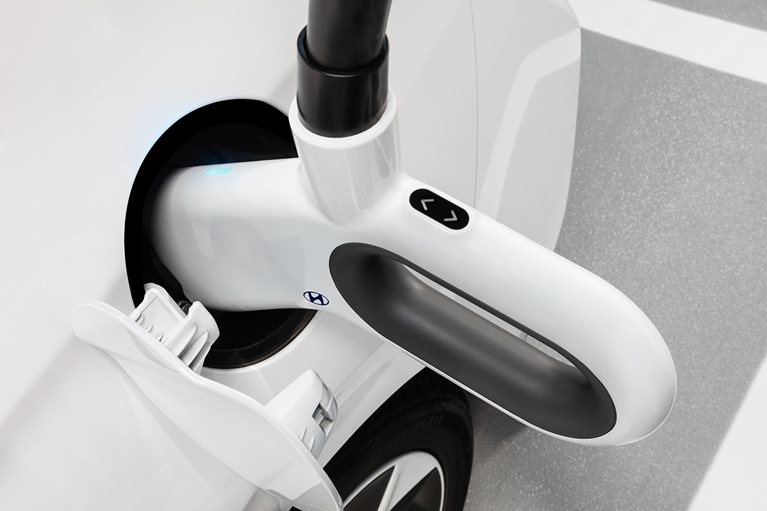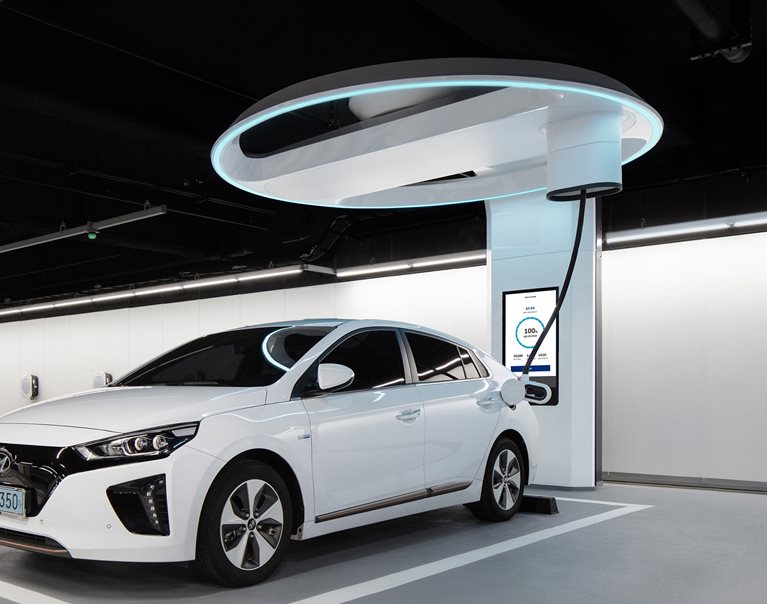While global auto sales have dropped overall during the pandemic, electric vehicles (EVs) have shown resiliency in some countries. Lower costs, government policies and regulations, and a lower carbon footprint are among the plausible reasons for this trend. Yet EV attractiveness is not without its hurdles, particularly when it comes to the charging experience. According to auto manufacturer Hyundai’s research, eight in ten EV owners are not satisfied with their current charger experience.
Projected to be among the top ten EV manufacturers by 2025, Hyundai therefore sought a revamp of its charging experience within the South Korean market. “A robust and user-friendly infrastructure required to charge electric vehicles is few and far between,” says Jeff Salazar, a McKinsey Design partner. “It’s rife with inconsistent charging port locations and cumbersome cables that force users to struggle to maneuver heavy and often unhygienic connectors.”

Over six months, Hyundai’s Creative Works team and McKinsey Design worked together to reimagine a frictionless user experience. The result: the Hyundai Hi-Charger, which features a gravity-free charging system that moves the burden of heavy, unwieldy cables from the user to the station. Recognized for its bold vision, the design was recently named a 2020 Fast Company Innovation by Design honoree and Red Dot Award recipient.
The Hi-Charger allows a user to drive up to the stall and, through an app or digital touch display, select the vehicle’s charging port position. From there, a connector automatically rotates and descends from a “halo” structure to the select point. “Our ambition was to make this completely effortless for the user, removing all constraints,” adds Young Jang, Hyundai Creative Works team leader. “As a company, we believe everyone should have equal access to a more sustainable future.”
To arrive at this “halo” concept, the teams first conducted qualitative research to fully understand the complications EV users face each day. Among the researchers involved was McKinsey design director Sona Patadia-Rao, who interviewed EV owners in their homes as well as observed how they interacted with existing charging stations. “We’d ask them questions like how might they think about charging differently if given the opportunity to do so,” she says.
To get a broad perspective across various use cases and driving behaviors, the teams chose participants both in the city in Seoul and in the nearby suburban area of Gyeonggi-do. They looked at users who owned EVs for various purposes, like commuting to work, seeing family, running errands, or leisure holidays. What they ultimately learned is there is no single user type. “When you approach a project that has no benchmark for what can be done, it’s our job as designers and engineers to push the boundaries of what’s possible but with an understanding of what’s feasible,” says Alexander Dakin, an associate design director at McKinsey.
“It’s easy to assume early EV adopters are tech-driven people, but our research helped us see this wasn’t always the case,” says Sona. For example, many users value other types of benefits these cars bring, such as environmental factors, which are big influencers in their purchasing decisions. “Understanding these motivations has to translate into the design, which needs to address a whole range of users and their differing behaviors,” she adds.

Once the research phase was completed and the pain points had been captured, the teams then began mocking up different ideas for charging stations all while considering the technical, manufacturing, and usability considerations. “Experimentation was a major part of all of this—the design process is driven less by hypothesis and more by a build-test-learn methodology,” Jeff says. “This work was really about building the emotional connection between a brand and its consumers. This new type of charging system experience is a compelling manifestation of Hyundai’s ethos in a rapidly evolving era of EVs.”
Just one year since launching in the South Korean market, the Hi-Charger has bridged the physical and digital experience of charging electric vehicles. “It’s completely shifting the paradigm for EV stations going forward,” Hyundai's Creative Works team says.
“Innovating in ways that might make you uncomfortable or don’t feel feasible often leads to the most memorable work,” says Jeff.
While users still have to physically charge the car, the Hi-Charger has alleviated a pain point in a way no one else has. “The question for us is always how can you make everyday intersections and processes as magical as possible,” says Jeff. “You do that by surprising people in unexpected ways that help them live as friction-free a life as possible.”